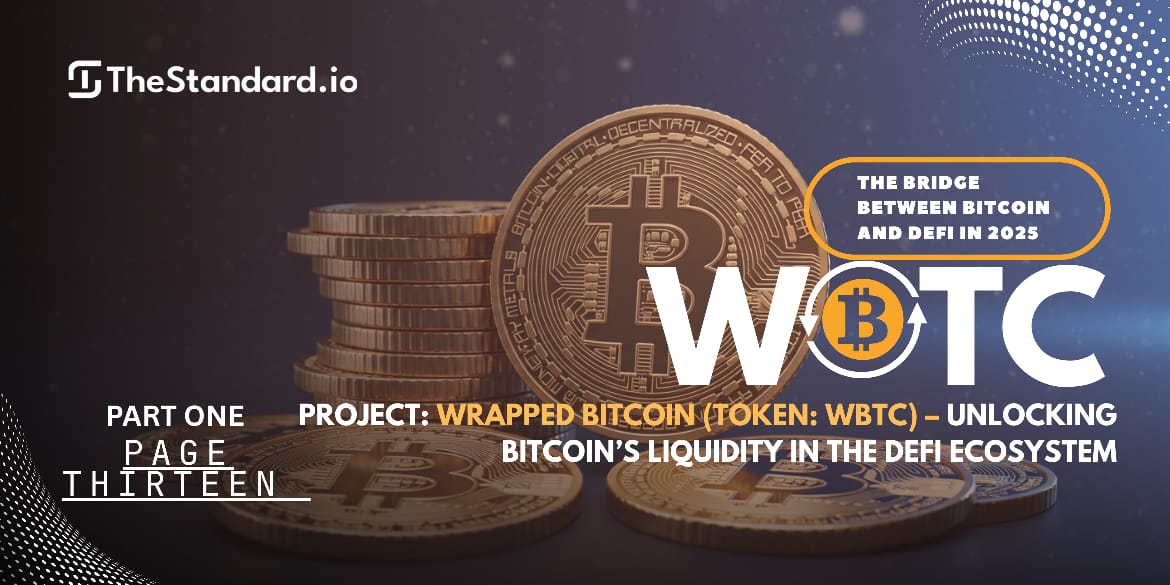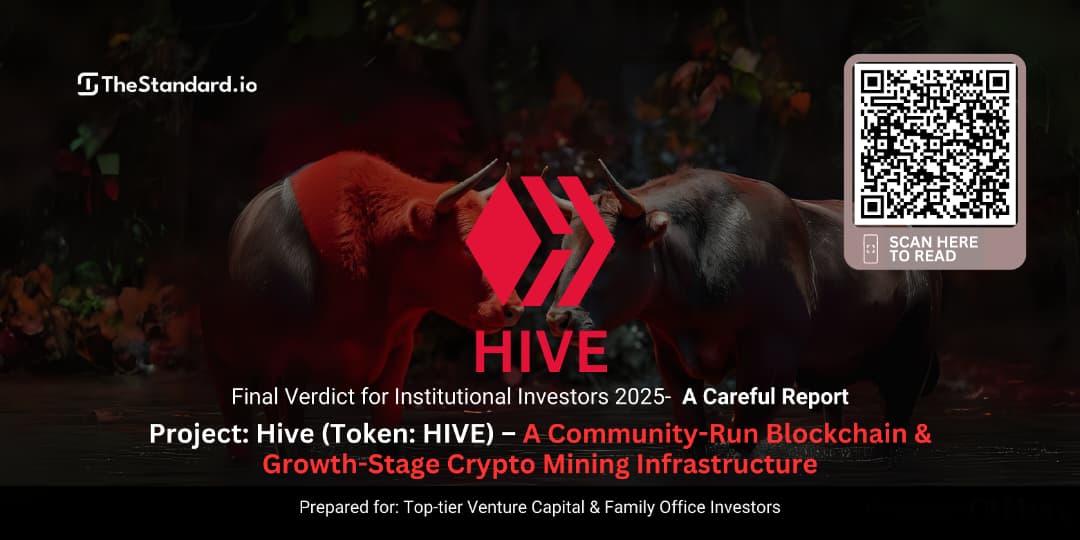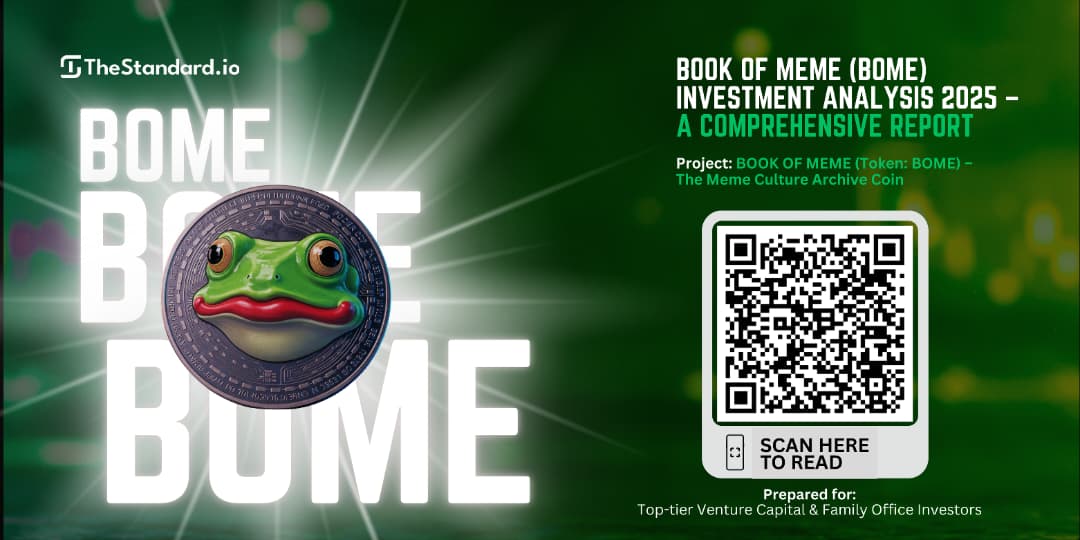Wrapped Bitcoin (WBTC): The Bridge Between Bitcoin and DeFi in 2025

Part 1 / Page 13
- Ethereum 2.0’s Shard Chains and WBTC: Ethereum 2.0 introduces shard chains that will enable the Ethereum network to scale even further. Each shard will process its own transactions and smart contracts, reducing the overall load on any single part of the Ethereum network. As WBTC integrates with Ethereum 2.0, these scalability improvements will ensure that Bitcoin liquidity can flow seamlessly through Ethereum-based platforms, making WBTC more accessible and functional as a token within the DeFi ecosystem.
- Impact on DeFi and WBTC’s Liquidity: As Ethereum 2.0 becomes more efficient, WBTC’s liquidity across Ethereum-based platforms will increase. Lower gas fees and faster transaction speeds will encourage more users to mint, redeem, and trade WBTC within the DeFi ecosystem. The ability to transact quickly and affordably will enable WBTC to scale within decentralized exchanges (DEXs), lending protocols, and liquidity pools, which will further solidify its position as the leading Bitcoin-backed token in the DeFi space (Ethereum 2.0 Whitepaper).
3. Proof-of-Reserve and Decentralized Trust
While Ethereum’s PoS is central to the security of WBTC, another key aspect of the consensus mechanism is the proof-of-reserve system used to ensure the 1:1 backing of WBTC tokens by Bitcoin held in reserve. This system helps to decentralize trust, allowing users and institutional investors to independently verify that each WBTC token is fully backed by Bitcoin.
- BitGo’s Custodianship and Proof-of-Reserve: BitGo, as the custodian of WBTC’s Bitcoin reserves, plays a critical role in maintaining the integrity of the proof-of-reserve system. Third-party auditing firms like Armanino perform regular audits to ensure that the Bitcoin reserves held by BitGo match the number of WBTC tokens in circulation. These audits are conducted at regular intervals and provide transparency to the WBTC network, allowing users to verify the backing of each token (Armanino).
- Decentralized Trust Mechanism: By implementing proof-of-reserve audits and making these results publicly available, WBTC allows users to independently verify that the tokens in circulation are not subject to inflation or mismanagement. This decentralized verification system builds trust in WBTC, making it a transparent and secure Bitcoin-backed token. As Ethereum transitions to PoS, WBTC will continue to rely on third-party auditors to ensure the Bitcoin backing remains intact, even as the network architecture evolves (Armanino).
4. Layer 2 Solutions and Consensus
The shift from PoW to PoS will be complemented by the implementation of Layer 2 solutions, which further enhance scalability and transaction speed. Solutions like Polygon, Optimism, and Arbitrum provide faster and cheaper transactions by processing operations off the Ethereum main chain. These Layer 2 solutions will benefit WBTC, as they reduce gas fees and increase the efficiency of interacting with the token.
- Layer 2 Adoption in DeFi: With Layer 2 scaling solutions, WBTC users can perform transactions at a much lower cost and at faster speeds, making it more efficient to use WBTC as collateral for lending protocols or trade it on decentralized exchanges (DEXs). By adopting Layer 2 solutions, WBTC will become even more accessible and functional in DeFi, further driving its adoption in the Ethereum ecosystem.
- Sharding and Ethereum 2.0: As Ethereum moves to sharding in the coming years, the Ethereum network will be able to handle a much larger volume of transactions. Each shard will act as a mini-blockchain, with its own consensus mechanism and smart contract executions. This improvement in scalability will directly impact WBTC’s performance, as Bitcoin liquidity can be used more efficiently across a larger number of DeFi protocols. These improvements, combined with the shift to PoS, will allow WBTC to scale and provide liquidity to a much larger portion of the DeFi market (Ethereum Foundation).
5. Ethereum’s Transition and WBTC's Future
The transition from PoW to PoS with Ethereum 2.0 is a monumental change that will impact the entire Ethereum ecosystem, including Wrapped Bitcoin (WBTC). As Ethereum 2.0 progresses, WBTC’s integration with PoS will ensure that it remains a highly secure, scalable token that benefits from the new network’s efficiency and cost-effectiveness. Ethereum 2.0 promises to solve the scalability issues that Ethereum has faced and will make it more attractive for users to interact with WBTC.
As the DeFi space continues to grow, Ethereum 2.0’s improvements will make WBTC more accessible and easier to use, positioning it as one of the most essential Bitcoin-backed tokens in decentralized finance.
Conclusion
Wrapped Bitcoin (WBTC) leverages the Ethereum blockchain’s powerful Proof-of-Work consensus mechanism and will soon transition to Proof-of-Stake (PoS) with Ethereum 2.0. This transition to PoS will improve scalability, reduce gas fees, and enhance security for WBTC transactions. The addition of Layer 2 solutions further bolsters WBTC’s scalability, ensuring that Bitcoin liquidity can flow seamlessly through Ethereum’s growing DeFi ecosystem.
The Proof-of-Reserve system, backed by BitGo’s custodianship and independent audits, ensures that WBTC remains fully backed by Bitcoin at all times, maintaining trust and transparency in the ecosystem. With the continued evolution of Ethereum and the growing adoption of DeFi protocols, WBTC is poised to play an even greater role in decentralized finance in the future.
Next is 3D: Scalability Solutions and Performance
Having explored WBTC’s consensus mechanism, we will now move on to Section 3D: Scalability Solutions and Performance, where we will discuss how the platform handles growing demand and improves transaction efficiency.
This concludes Section 3C: Consensus Mechanism for Wrapped Bitcoin (WBTC). We've explored how Ethereum’s Proof-of-Stake transition impacts WBTC, its integration with Layer 2 solutions, and the security of the Proof-of-Reserve system. Next, we will dive into scalability solutions in Section 3D: Scalability Solutions and Performance.
Here's Section 3D: Scalability Solutions and Performance for Wrapped Bitcoin (WBTC). In this section, we will explore how WBTC addresses scalability challenges and ensures optimal performance, especially within the context of Ethereum’s scalability solutions, Layer 2 networks, and multi-chain integrations.
3D. Scalability Solutions and Performance
Overview: The Need for Scalability
Scalability has been one of the most pressing challenges for the Ethereum network and by extension for Wrapped Bitcoin (WBTC). As Ethereum’s DeFi ecosystem exploded in size, so too did the demand for faster, more efficient transactions. Ethereum, traditionally using Proof-of-Work (PoW), faced scalability issues such as high gas fees and network congestion during periods of peak demand. As Ethereum 2.0 transitions into Proof-of-Stake (PoS) and Layer 2 solutions are implemented, the scalability of WBTC will improve significantly.
As a tokenized version of Bitcoin, WBTC operates on Ethereum, and any network inefficiencies in Ethereum can directly affect WBTC’s performance. Therefore, addressing scalability is crucial for WBTC’s continued success and adoption in the rapidly expanding DeFi space. Below, we will examine how scalability solutions such as Layer 2 protocols and Ethereum’s transition to PoS have enhanced WBTC’s usability.
1. Layer 2 Solutions: Addressing Gas Fees and Speed
Layer 2 solutions are an essential part of WBTC’s strategy to address scalability challenges. These solutions are built on top of Ethereum’s mainnet and help increase throughput, reduce gas fees, and improve transaction speed without sacrificing security. Layer 2 protocols allow transactions to be processed off-chain and later settled on Ethereum, significantly reducing network congestion and the cost of interacting with DeFi protocols.
a. Polygon (Previously Matic Network)
One of the most prominent Layer 2 solutions integrated into WBTC is Polygon (formerly Matic Network). Polygon leverages Plasma chains and sidechains to enable faster and cheaper transactions on Ethereum. By using Polygon’s network, WBTC can operate with lower gas fees, making it more accessible to a broader range of users, particularly those with smaller transaction amounts that might otherwise be priced out due to high Ethereum gas costs.
WBTC’s integration with Polygon has opened up new use cases by enabling the use of WBTC in Polygon-based DeFi protocols. As Polygon becomes increasingly popular for Ethereum-compatible dApps, WBTC’s adoption on Polygon ensures that Bitcoin liquidity is available on a second-layer scaling solution. This makes WBTC a more efficient asset for liquidity provision, trading, and collateralization on decentralized exchanges like QuickSwap and SushiSwap (Polygon).
b. Optimism and Arbitrum: Ethereum’s Rollups
Another Layer 2 solution that improves WBTC’s performance is the integration with Optimism and Arbitrum. These rollups work by processing transactions off-chain and then bundling them to be posted on Ethereum’s mainnet. This significantly increases the transaction throughput of Ethereum, as well as lowering the gas fees typically associated with Ethereum-based transactions.
With Arbitrum and Optimism, WBTC transactions can be executed faster and cheaper, making it easier for WBTC users to participate in Ethereum-based DeFi protocols without the worry of high transaction costs. This scalability improvement has already led to significant usage of WBTC in Layer 2 DeFi ecosystems, where users can stake or lend their WBTC tokens with minimal delays and fees. This makes WBTC even more viable for everyday DeFi applications, including yield farming, collateralized borrowing, and synthetic asset trading (Optimism, Arbitrum).
c. ZK-Rollups: Future Scalability
In addition to Optimism and Arbitrum, ZK-Rollups (Zero Knowledge Rollups) are also a key part of Ethereum's scalability solution. ZK-Rollups differ from Optimistic Rollups in that they bundle transactions and use zero-knowledge proofs to verify the validity of off-chain transactions before posting them to Ethereum’s mainnet. This offers a more efficient and secure scalability solution.
As Ethereum continues to evolve, ZK-Rollups are likely to play an increasingly important role in the scalability of WBTC. These rollups will allow WBTC to be used more efficiently, further lowering transaction costs and increasing the overall transaction throughput. By adopting ZK-Rollups, WBTC can ensure seamless integration with Ethereum’s scaling future, providing a more robust and future-proof solution for Bitcoin liquidity in DeFi (Ethereum Foundation on ZK-Rollups).
2. Ethereum 2.0: The Move to Proof-of-Stake (PoS)
One of the most important developments in the Ethereum network is the transition from Proof-of-Work (PoW) to Proof-of-Stake (PoS) with Ethereum 2.0. This transition will significantly improve Ethereum’s scalability and WBTC’s performance within the Ethereum ecosystem.
a. PoS and Network Efficiency
In the PoS model, instead of using miners to validate transactions, Ethereum will use validators who are required to stake their ETH as collateral to participate in transaction validation. This transition to PoS is expected to increase Ethereum’s transaction throughput, reduce gas fees, and improve the overall efficiency of the network.
For WBTC, the transition to PoS is expected to result in faster and cheaper transactions, which will directly benefit WBTC users when interacting with DeFi protocols. As WBTC is minted and burned on Ethereum’s PoS network, users will see a more seamless experience with lower transaction costs and faster processing times. This will make WBTC even more attractive to institutional and retail users who are participating in the Ethereum-based DeFi space (Ethereum 2.0).
Thank you for taking the time to read this article. We invite you to explore more content on our blog for additional insights and information.
https://www.thestandard.io/blog
"If you have any comments, questions, or suggestions, please do not hesitate to reach out to us at [ https://discord.gg/K72hed6FRE ]. We appreciate your feedback and look forward to hearing from you."
CLICK HERE TO CONTINUE
PART 1 / PAGE 14: www.thestandard.io/blog/wrapped-bitcoin-wbtc-the-bridge-between-bitcoin-and-defi-in-2025-14
6 of the best crypto wallets out there
Vulputate adipiscing in lacus dignissim aliquet sit viverra sed etiam risus nascetur libero ornare non scelerisque est eu faucibus est pretium commodo quisque facilisi dolor enim egestas vel gravida condimentum congue ultricies venenatis aliquet sit.
- Id at nisl nisl in massa ornare tempus purus pretium ullamcorper cursus
- Arcu ac eu lacus ut porttitor egesta pulvinar litum suspendisse turpis commodo
- Dignissim hendrerit sit sollicitudin nam iaculis quis ac malesuada pretium in
- Sed elementum at at ultricies pellentesque scelerisque elit non eleifend
How to choose the right wallet for your cryptos?
Aliquet sit viverra sed etiam risus nascetur libero ornare non scelerisque est eu faucibus est pretium commodo quisque facilisi dolor enim egestas vel gravida condimentum congue ultricies venenatis aliquet sit quisque quis nibh consequat.

How to ensure the wallet you’re choosing is actually secure?
Integer in id netus magnis facilisis pretium aliquet posuere ipsum arcu viverra et id congue risus ullamcorper eu morbi proin tincidunt blandit tellus in interdum mauris vel ipsum et purus urna gravida bibendum dis senectus eu facilisis pellentesque.
What is the difference from an online wallet vs. a cold wallet?
Integer in id netus magnis facilisis pretium aliquet posuere ipsum arcu viverra et id congue risus ullamcorper eu morbi proin tincidunt blandit tellus in interdum mauris vel ipsum et purus urna gravida bibendum dis senectus eu facilisis pellentesque diam et magna parturient sed. Ultricies blandit a urna eu volutpat morbi lacus.
- At at tincidunt eget sagittis cursus vel dictum amet tortor id elementum
- Mauris aliquet faucibus iaculis dui vitae ullamco
- Gravida mi dolor volutpat et vitae lacus habitasse fames at tempus
- Tellus turpis ut neque amet arcu nunc interdum pretium eu fermentum
“Sed eu suscipit varius vestibulum consectetur ullamcorper tincidunt sagittis bibendum id at ut ornare”
Please share with us what is your favorite wallet using #DeFiShow
Tellus a ultrices feugiat morbi massa et ut id viverra egestas sed varius scelerisque risus nunc vitae diam consequat aliquam neque. Odio duis eget faucibus posuere egestas suspendisse id ut tristique cras ullamcorper nulla iaculis condimentum vitae in facilisis id augue sit ipsum faucibus ut eros cras turpis a risus consectetur amet et mi erat sodales non leo.

Subscribe to our newsletter.
Get the latest alpha from us, and the Chainlink build program in an easy-to-read digest with only the best info for the insider.
It's an easy one-click unsub, but I bet you won't; the info is just too good.

Try the future of borrowing today.
Don't wait. It's easy to open a free smart vault
then start earning a yield and borrowing today.
0xf5A27E55C748bCDdBfeA5477CB9Ae924f0f7fd2e
USDs Contract on Arbitrum:
0x2Ea0bE86990E8Dac0D09e4316Bb92086F304622d










